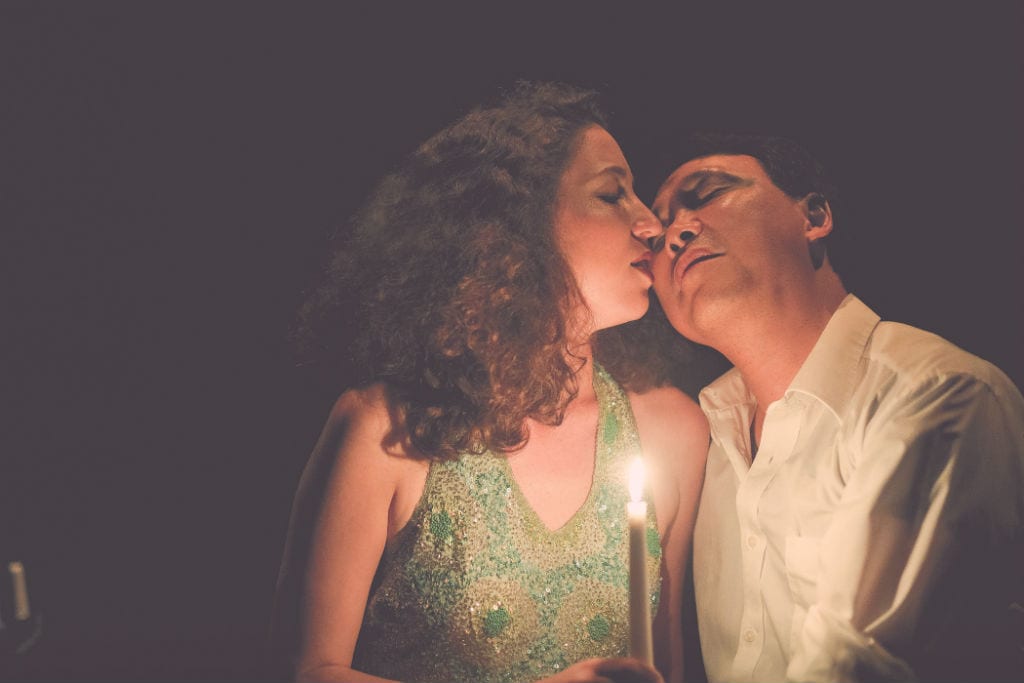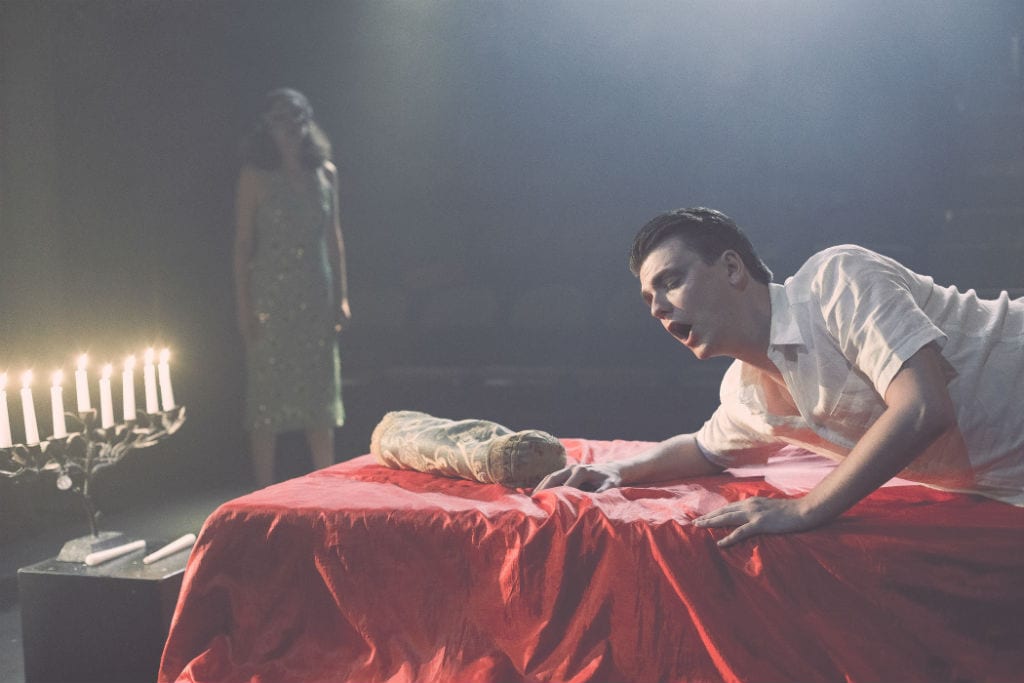Arcola’s Grimeborn season often includes rarely performed operas. Lully’s Armide is a brave excursion into French baroque opera. It is a work that intimidates big companies and to perform it with limited resources in a small space is a brave venture. For the first performance in Paris in 1686, Lully – who was impresario as well as composer – demanded for Armide a huge orchestra, lots of singers, and a large dance troupe. As court composer Lully was as famous for his ambitious and spectacular productions as for his music. The team assembled for this production at the Arcola by the inventive stage and music director, Marcio da Silva, may be few in number but they make a pretty good job of displaying the musical and dramatic virtues of the piece.
Armide is a Muslim warrior princess who is defending the Syrian people against the invading crusaders. She identifies Renaud as the most heroic and dangerous of the crusader knights and manages, by sorcery, to capture him. She is about to kill him when she is overcome by his beauty and decides that a better revenge will be to use magic to make him fall in love with her. Her spells are successful but she in turn falls in love with him and realises that she cannot bear the realisation that her love is real while his is merely the result of magic. However, Renaud is freed from the enchantment and flees Damascus, leaving Armide in torment.
The tiny performing area in the main studio of the Arcola is dominated by a large candelabra and a platform covered in a red cloth which serves many functions including the bed where the enchanted Renaud sleeps. With such minimal scenery the cast do a decent job of conjuring up Armide’s enchanted palace, and the setting for the planned murder of Renaud and for his seduction by the sorceress. But the main device for dramatizing what is always in danger of being a very static plot is the choreographed movement that involves every member of the cast. Apart from the comic scenes of Act 4 which have an unfortunate whiff of Monty Python about them, this is brilliantly devised and serves to bring a powerful sense of ritual to the performance. The costumes especially for the women are very effective too.
The two principals – Rosemary Carlton-Willis as Armide and Guy Withers as Renaud – are excellent. Willis conveys the torment of Armide as she veers between lust, love, and vengeance with style and dramatic truth. Withers has a beautiful high tenor voice which he uses to great effect in the small space at the Arcola and the duets between Willis and Withers are very affecting. Not all the smaller roles are sung with such style and precision but Ashley Adams who plays Armide’s confidante Phenice is an accomplished soprano and Helen May was very effective in the small role of Melisse in Act 4.
The Ensemble OrQuesta, playing period instruments, provided an accomplished reading of the stripped-down score but sometimes found tuning a problem in the heat of the Arcola gallery where they were placed. The harpsichord and lute combined well with the ensemble under the baton of Matthew Morgan.
The whole enterprise felt like a labour of love. Affection for the work of this neglected genius of French baroque opera shone through. For me, however, doubts remain whether it is a suitable work for performing in a ‘stripped down’ version and without a stage that allows for grand effects and large choruses. But thanks to Grimeborn for offering us the rare chance to experience this milestone of French opera.




